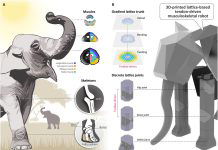
Self-driving cars might sound like a dream for those of us who’d love to catch up on work or take a quick nap while heading to a destination.
However, a new study is saying, “Not so fast!”
According to research led by RMIT University, it might not be safe to let your guard down in a self-driving car just yet, especially if you’re needed to take over the wheel suddenly, like in an emergency.
Cars today are becoming smarter. They can do things like staying in a lane, parking themselves, or controlling speed.
These are Level 1 and Level 2 features in the world of automated driving. But what we usually think of as ‘self-driving cars,’ which are Level 3 and Level 4, are not out in Australia just yet. These levels require that a human still be able to take control in emergencies.
Dr. Neng Zhang, who led the study, said this research is the first step in creating rules for using these cars safely. The study aims to help make laws that give drivers enough time to respond to emergencies when they need to take over the car.
What did the study find?
The study used a simulation of a Level 3 self-driving car and checked how quickly and well people could take control in an emergency situation.
They had people do different things like writing emails, watching videos, or even resting with their eyes closed. Then they checked how these people responded when they suddenly had to take control of the car.
The results were worrying. All the activities made it harder for people to respond well in an emergency.
Resting was the worst, making it hardest for people to take over driving safely. Working came next, and using social media was the least distracting but still problematic. The longer people were engaged in these activities, the worse they were at responding.
The study also found out that experience behind the wheel counts.
Young or inexperienced drivers, who had driven less than 20,000 kilometers, had a tougher time taking control than those with more experience.
Dr. Zhang suggests that car makers and authorities should think about this when planning for the future of self-driving cars.
Professor Stephen Robinson, one of the authors, warns that emergencies require quick thinking and fast action.
Self-driving cars can’t handle everything yet, and that’s when humans need to jump in. Professor Mohammad Fard, another expert on the team, says the goal is to make the transition between the car driving itself and a human taking over as smooth as possible.
However, there’s a limit to what technology can do. Laws also need to come into play to make sure people are alert and prepared to take over driving when needed. The team is now looking at ways to keep drivers more alert and effective when they have to take over.
In short, while self-driving cars may be a big part of our future, this study shows that there’s still a lot to consider to make sure they’re safe for everyone.
So for now, don’t plan on napping or catching up on work while your self-driving car handles the commute.
Follow us on Twitter for more articles about this topic.



